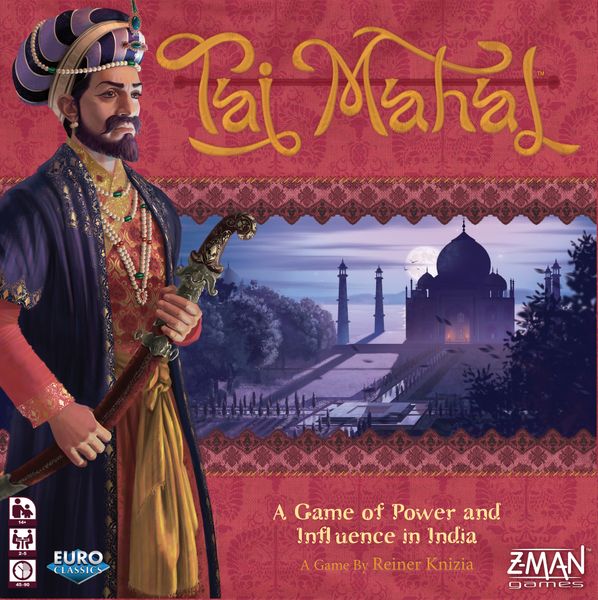Taj Mahal (2000) Board Game
Taj Mahal is a board game designed by Reiner Knizia and released in in 2000. It is a game of bluffing and political maneuvering set in the exotic world of 17th century India. Players take on the roles of powerful maharajas competing to build the most impressive palaces and gain the favor of the Grand Mogul.
Game Components of Taj Mahal
How To Setup Taj Mahal
To set up the game, players first shuffle and deal a set of cards to each player. The game board is laid out, and the necessary tokens and commodities are placed within reach. Each player starts with a set of cards and an elephant token. The setup ensures all players have the necessary resources to begin competing for influence.
Gameplay Mechanics and Game Objective
Player Experience
Playing Taj Mahal involves a blend of strategic planning and tactical card play. Players need to balance their bids carefully to ensure they can execute their plans without running out of resources. The game requires a good understanding of hand management and the ability to adapt to changing circumstances.
Pros
Cons
Personal Thoughts on Taj Mahal
Taj Mahal is ideal for fans of Euro strategy games who enjoy deep, complex gameplay and strategic planning. It is best suited for players who appreciate hand management and bidding mechanics. While it may not be the best fit for casual gamers due to its complexity, it offers a rich and rewarding experience for those willing to invest the time to learn and master its strategies.
We are supported by our audience. When you purchase through links on our site, we may earn an affiliate commission, at no extra cost for you. Learn more.

